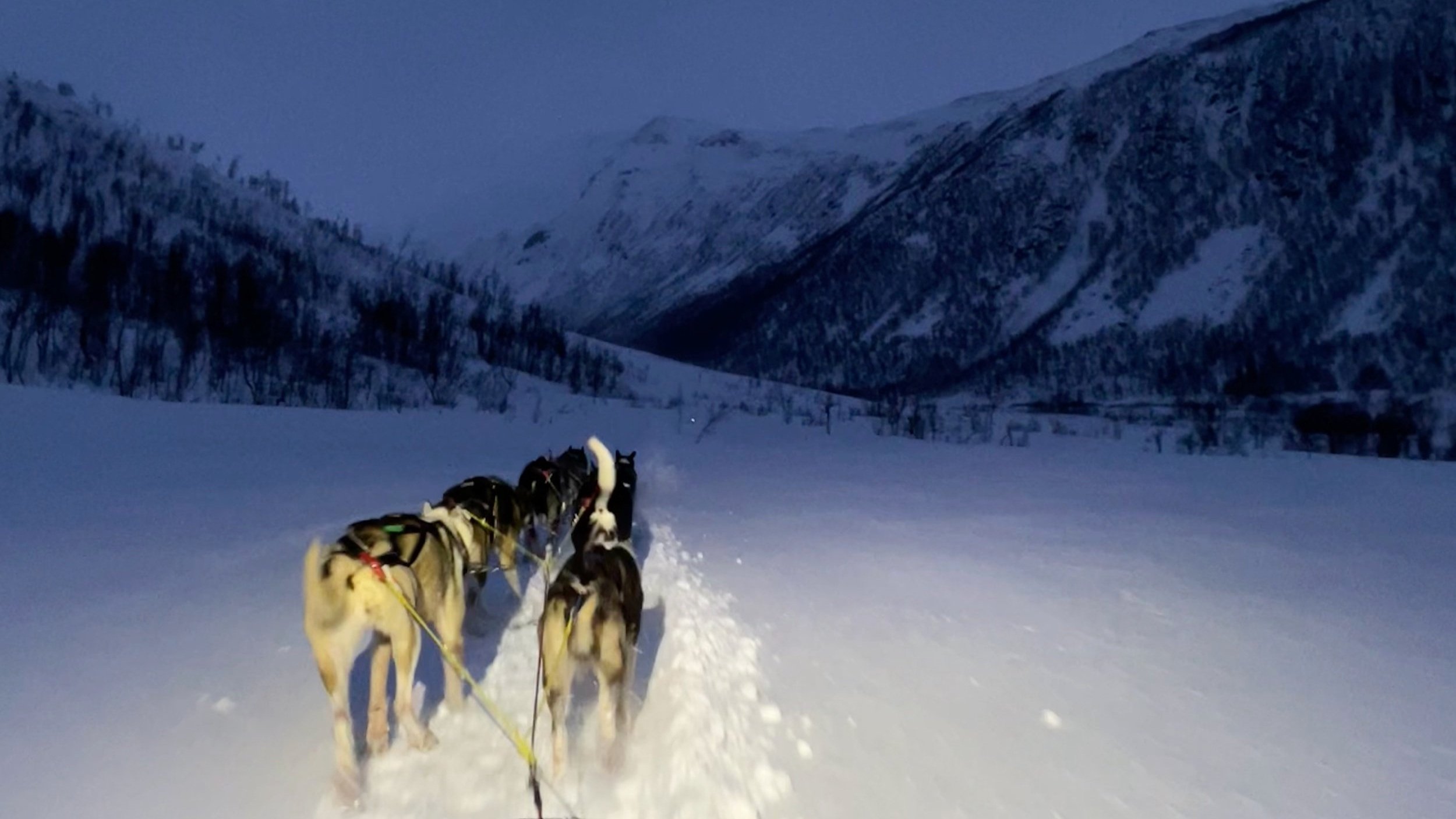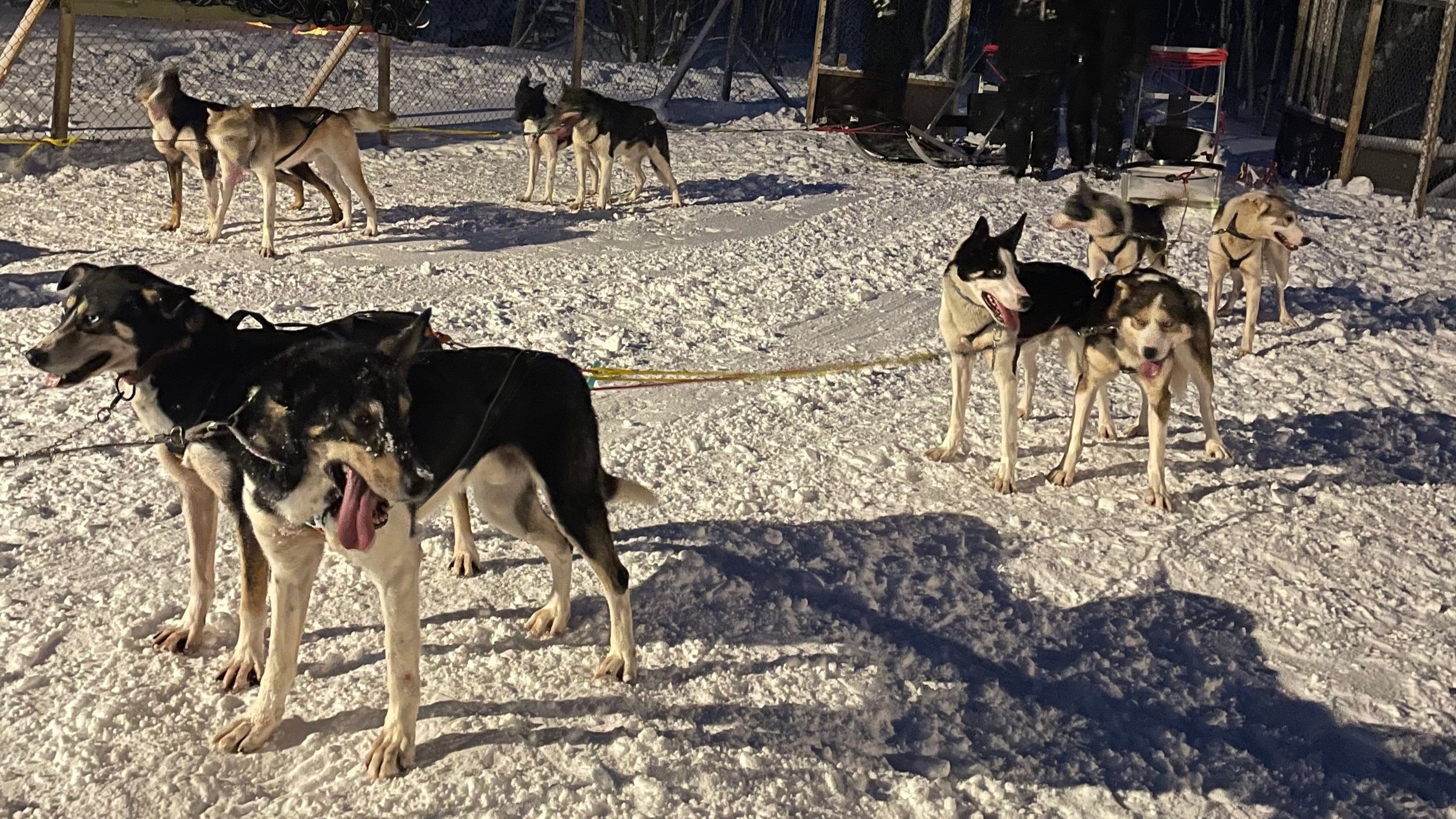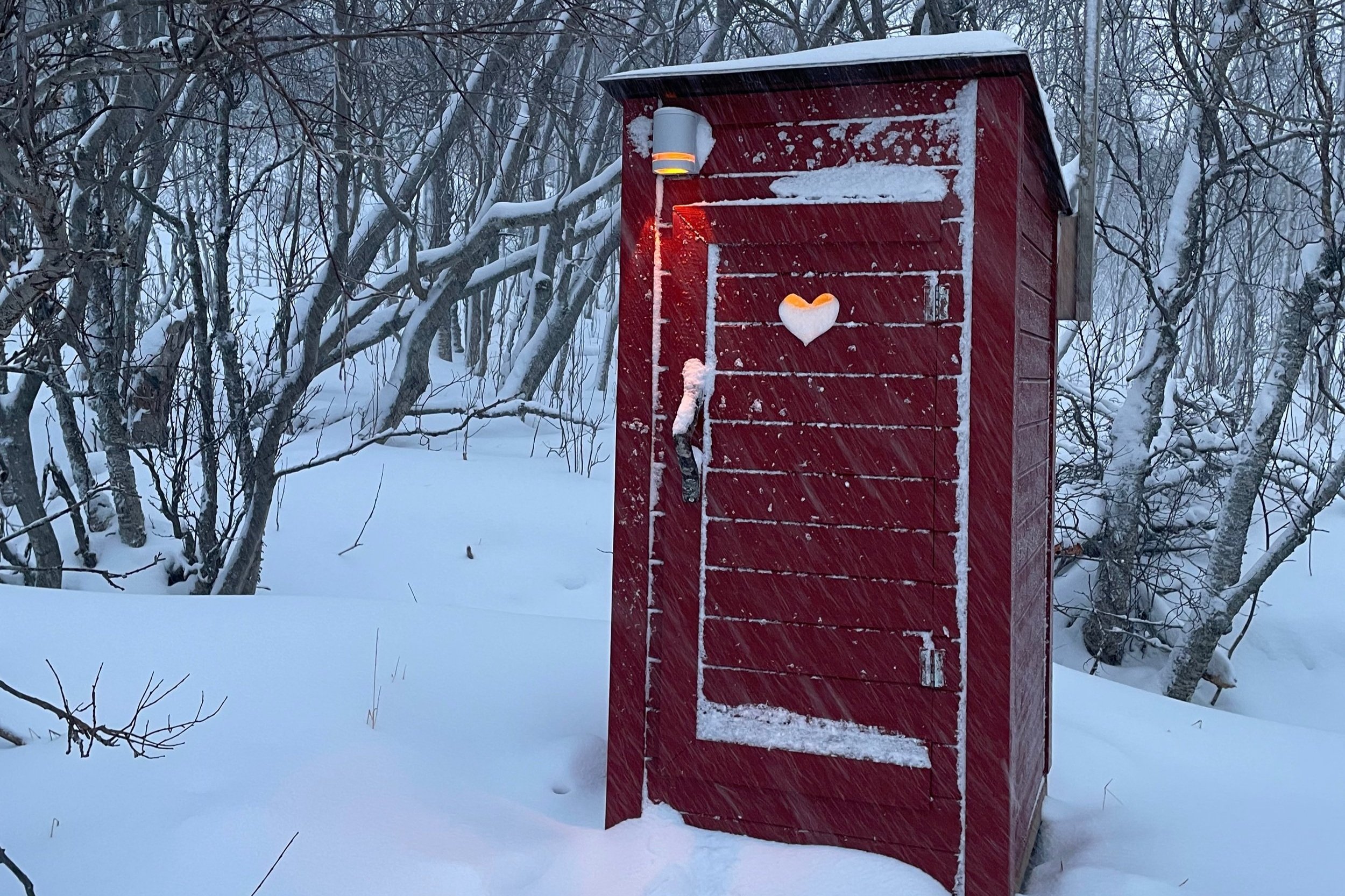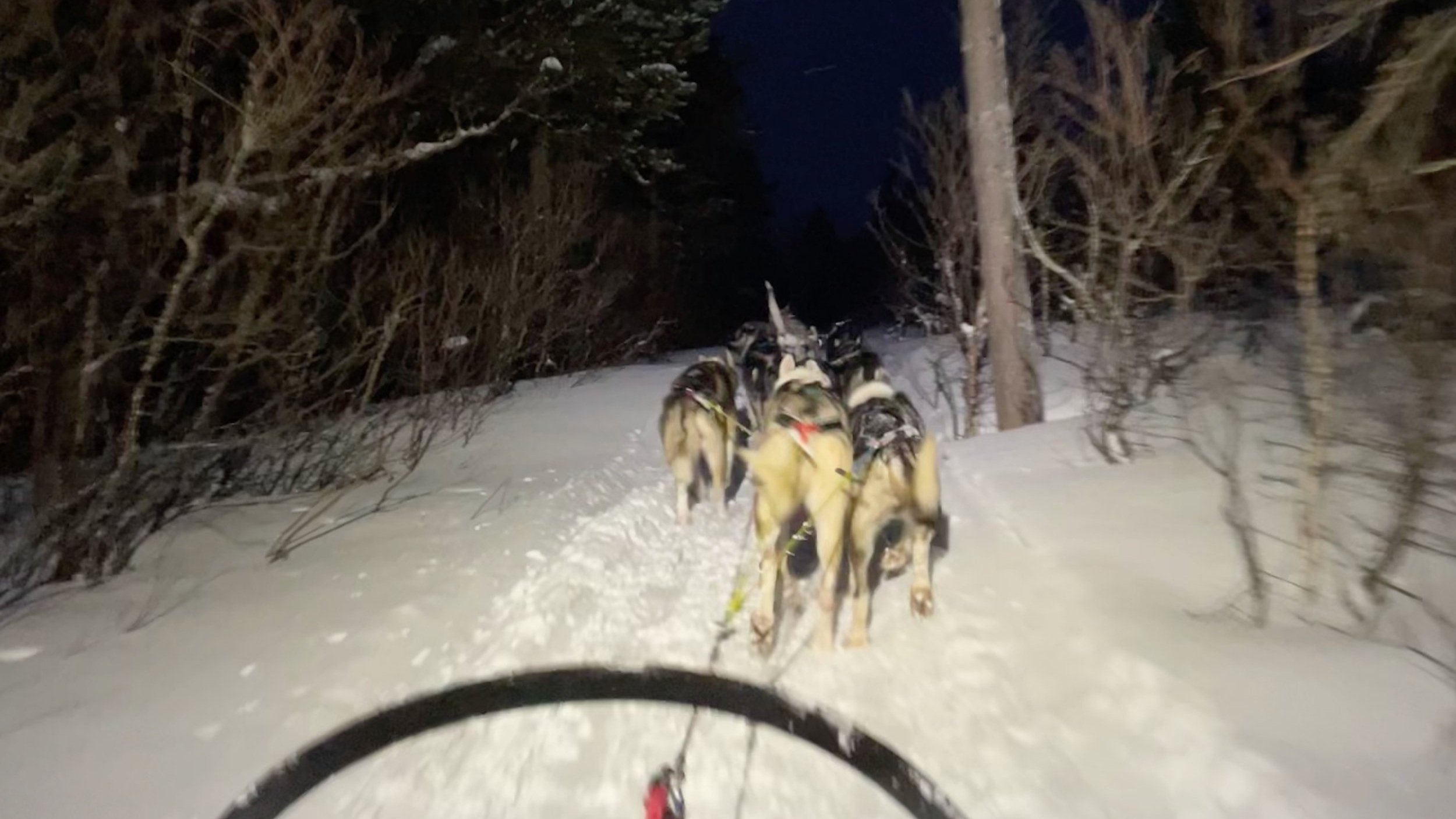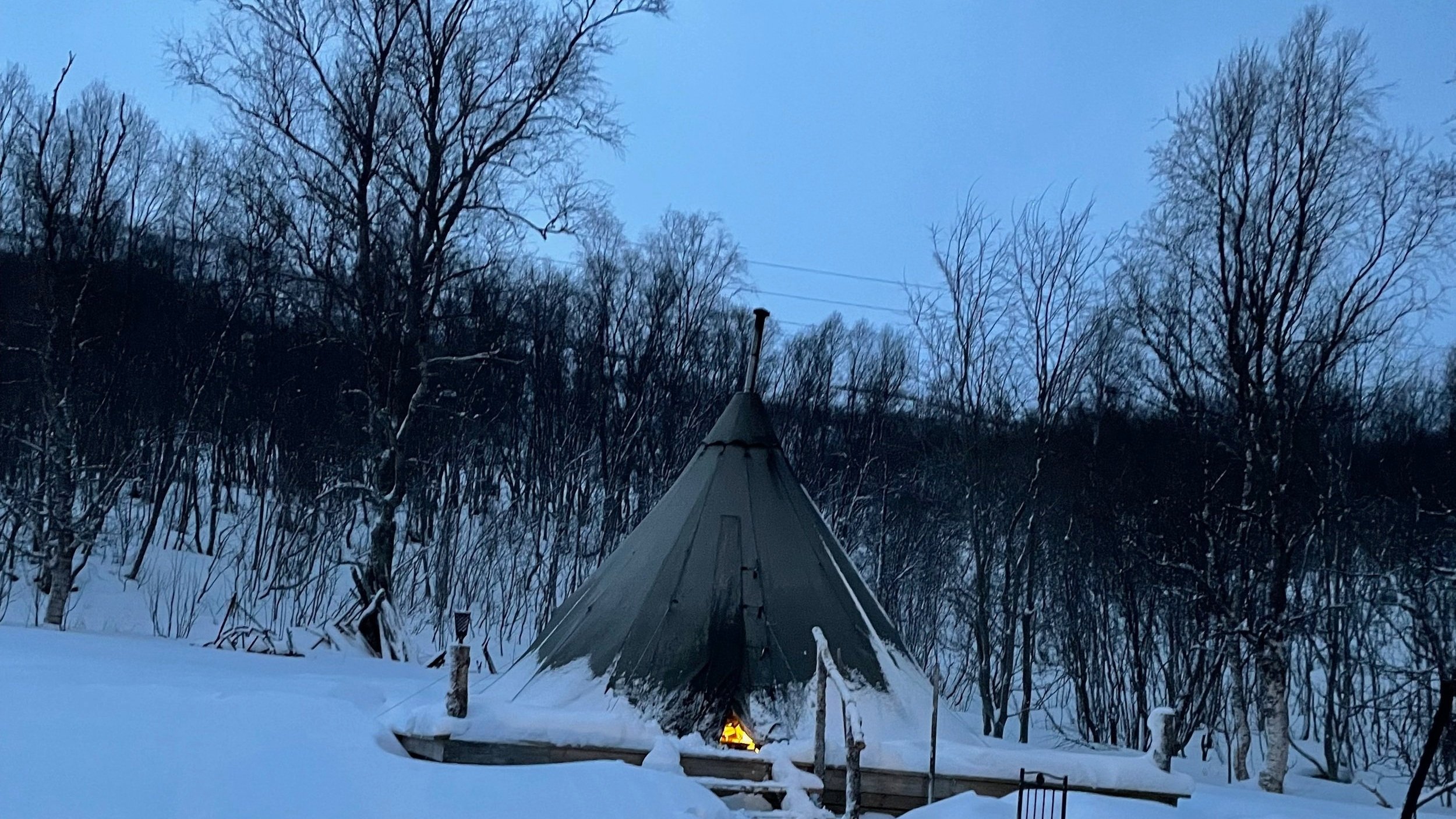What’s the deal with dog sledding in Tromsø?
When you look up “Things to do in Tromsø,” dog sledding is an activity that keeps popping up. In fact, it's one of the most popular activities in the Arctic Circle.
To be honest, I wasn’t 100% sure how I felt about this. I’m generally not a fan of anywhere that has captive animals. Especially not those that are put to work and kept in cages. But after a bit of research I felt comfortable about one thing: huskies love sledding.
So we booked on with the smallest sledding company in the area: Klavøya Husky AS.
How do husky sledding experiences work?
We booked onto a day tour at Klavøya Husky, which the website says takes 5 hours. It cost 1850 NOK (£150) per person, including pick-up and drop-off in Tromsø. However, we opted to drive ourselves (there is designated parking) as we were coming from Sommarøy.
The experience began at 3pm. And in February, this meant there was less than an hour of daylight left. You can choose to self-drive your sled, but due to the very snowy conditions this wasn’t possible on the day of our visit.
The team gave us full suits, with the option to choose between and all in one, or a snow coat and trousers. They also provided snow boots and goggles. Although they ask that you bring your own hat, gloves, and scarf. And despite the freezing snowy weather, we weren’t cold at all.
Klavøya Husky offers small day tours and also overnight camping experiences. The ride takes 45 minutes to an hour depending on the conditions. But the snow was thick the day of our visit, so it was a shorter ride. The track is made by the owner ahead of time, and the dogs follow it, running the entire time.
What happens on a husky sledding tour?
Once everyone is changed, you walk through the yard where 53 dogs are excitedly howling and playing in their enclosures. There were eight people in total in our group, and the sleds hold two people plus the musher (driver). So 20 huskies were let out into the pen to be put on the sledding line.
Four people went sledding while four of us sat in the Lavvu tent and chatted with the owner about his life in Klavøya. It was interesting to heaar about how he started his husky sledding business, and his experience living in the Arctic Circle.
Then it was our turn to ride.
What is dog sledding like?
The dogs howl on the line until the second they’re let off to run. At which point a focused silence takes over the pack, and they charge forward. Moments later, you’ll hear all the dogs left behind at the camp howling. It sounds like they’re either saying goodbye to their friends, or are jealous that they’re not out there sledding too.
As we sledded, our musher told us about the dogs. How they’re trained for racing, and how they’re born, live, and die all at the camp where they’re loved and well cared for. You can tell just by sitting in the sled that they really love running and don’t feel tired out. Even after two 7 km laps of the track.
After a couple of loops – which was mostly smooth and involved uphill, downhill, and some bumpy areas – we were back. It felt like the ride had taken seconds rather than 45 minutes. Then, we were able to help de-harness the dogs and also met some of the younger dogs that weren’t yet part of the sledding team.
It was an amazing and unique experience and I'm glad we decided to go dog sledding in Tromsø.
Is dog sledding scary?
A simple answer to this is no: dog sledding isn’t a scary experience. But I say this as someone who is not scared of dogs. The sled doesn’t go that fast, although it is bumpy at times. And the mushers are very experienced and informative, which helps put you at ease.
If you’re not confident with dogs then the start of the experience, when the sledding huskies are let into the pen with you, could feel quite intimidating. But the team did give the option for us to leave the pen if it became overwhelming.
The dogs run around, bark and howl, and play with each other and you. If the dogs fight, the team are quick to pull them off each other. And they even removed some dogs from our group that weren’t getting on. But they are very friendly, albeit excitable, and love to be fussed over by humans.
Are the dogs happy at husky sledding camps?
There are questions around how ethical dog sledding is. This is because, when they’re not running, the dogs are chained up and live in cages. At Klavøya Husky, these cages were massive and the dogs seemed relaxed and happy. They play with their friends and jump between boxes and other toys in their enclosures.
There are stories about dogs being treated poorly or overworked at some dog sledding camps. But this didn't seem to be the case at Klavøya Husky. Their pack of 53 dogs is the smallest in the area, and the dogs are definitely well cared for.
The team of mushers know each dog personally. Including what they like and don’t like and how suited they are to sledding. They let the dogs get enough rest between rides, and know how long and far they are capable of racing.
Is dog sledding unethical?
When you experience dog sledding, you can’t argue that these dogs love mushing. And they're certainly strong-minded enough to refuse if they didn't want to do it. In this way, it's ethically comparable to horse riding.
And while being kept outside in the cold might be hard to imagine when it comes to our own pets, these are practically wild animals. They are built for, and clearly don’t mind, the cold and the snow or pulling the sleds. They even roll in the snow to get play and cool down after racing.
Even in their cages, the dogs smile, wag their tails, and jump up for attention from the humans that walk past. If you don’t know dogs, the barking and howling could sound like distress. But in reality, these noises are just how dogs communicate – much like wolves.
I left the experience feeling confident that dog sledding, at least at Klavøya Husky AS, is not a cruel or unethical practise. However, that’s not to say that this is true of all husky sledding experiences. So be sure to do your own research into the company you choose to book with.
Looking for more things to do in Tromsø? Check out our blog.
